Livestorm vs. Demio: 2025 Comparison
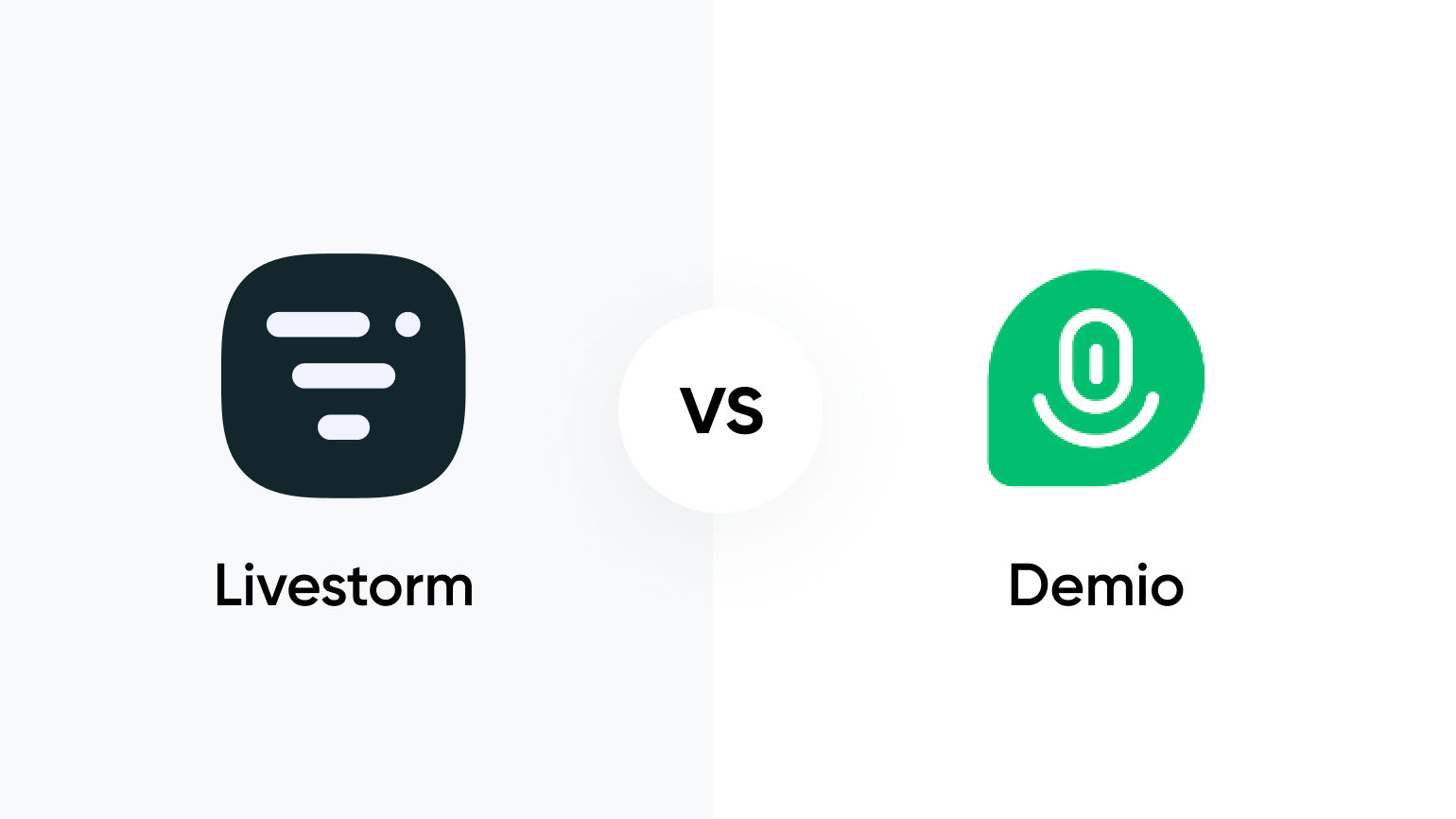
Finding the best webinar platform for your brand can be hard, especially when there are so many options to choose from.
If you’ve been looking at the different tools available to host your webinars, you’ve probably encountered tools such as Livestorm and Demio.
Both platforms offer a basic coverage of the features you need to run webinars, no matter what your objective is. But how do they compare to one another in terms of offering, value, and pricing?
In this article we'll take a look at the key features and offering each platform has to offer. Let's jump right in.
How we sourced this data
To make sure we provide you with the best and most unbiased comparison possible, we look at 20+ websites.
These websites include user-review websites, specifically those specialized in SaaS, and the websites of the mentioned tools of course.
Information from these different sources were prioritized in the following order:
- Third party websites (no sponsored posts/content)
- User reviews (G2, Gartner, marketplaces)
- Websites of the tools themselves
Some examples of those relevant sources:
- Livestorm reviews on G2
- Livestorm reviews on Capterra
- Livestorm reviews on HubSpot marketplace
- Demio reviews on G2
- Demio reviews on Capterra
- Demio reviews on HubSpot Marketplace
Pricing, viewer limits, feature list, and customer support options are sourced directly on the website of the tools themselves.
We will try to provide the most unbiased review possible. However, the quality of the viewer experience for each tool is subjective. We will be judging it on the modernity and interactivity of the experience.
Before we get into the key features, here’s a brief overview of the two products, including Livestorm vs Demio pricing and online review ratings.
Livestorm overview
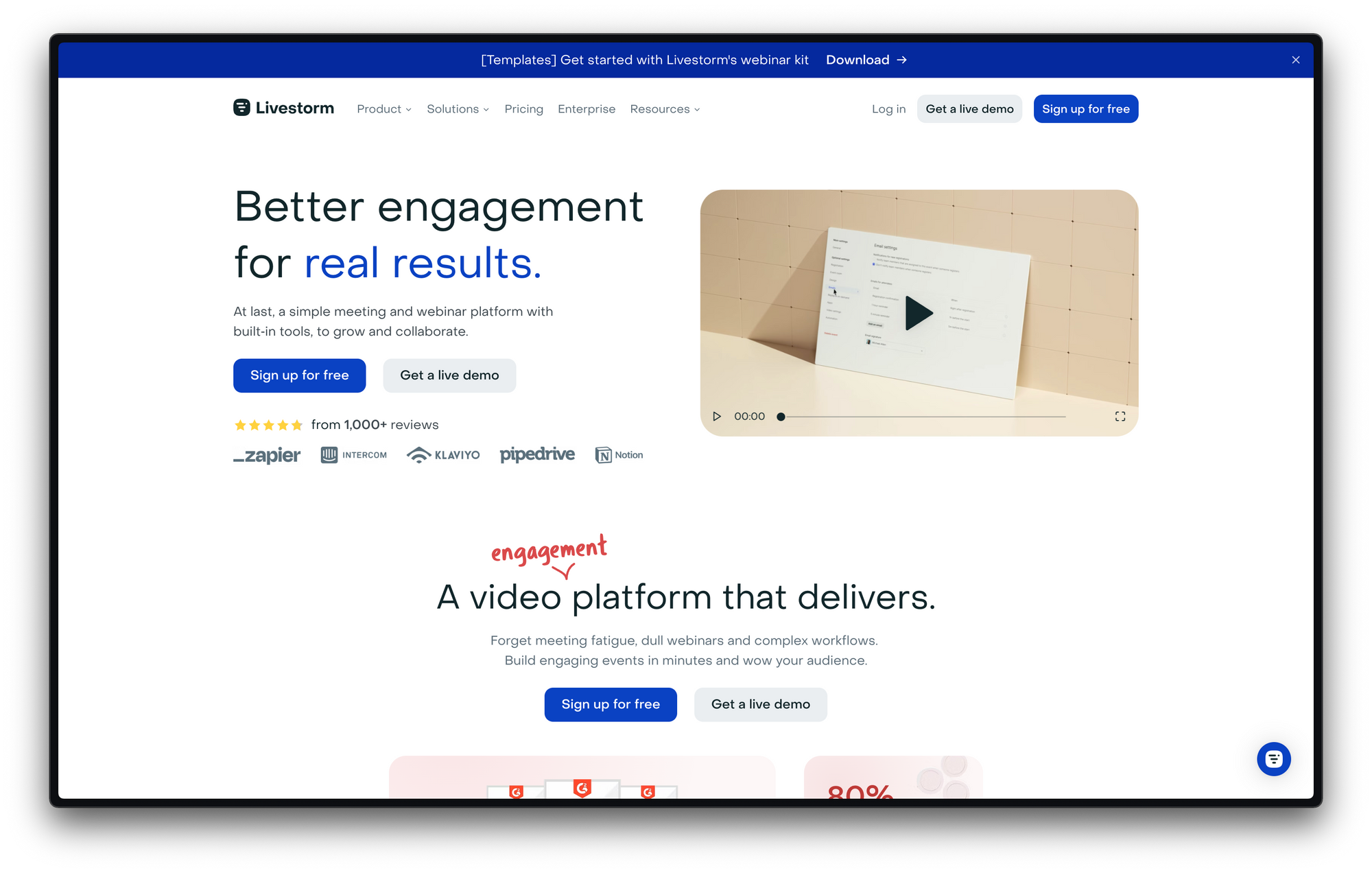
Cost
Livestorm offers monthly and yearly (20% off) pricing plans. They are centered around active contacts: unique people who register or join (one or several) Livestorm events.
- <100 active contacts: $99/month
- <200 active contacts: $198/month
- <500 active contacts: $495/month
- Pricing plans for 500+ active contacts are unavailable
Team members are unlimited on all pricing plans, but some key features only unlock after certain pricing tiers:
- HubSpot integration: Pro plan
- Salesforce integration: Enterprise plan
- PowerPoint embed: Enterprise plan
Free plan: Livestorm has a free plan that's good for testing out the platform internally, but won't be enough for most companies to run a "real" webinar. The plan includes:
- 30 active contacts/month
- 20 minutes/session
- Base integrations + features
- Email support only
Free trial: No. But freemium plan available.
Reviews
Gartner reviews: 4.4/5
Ease of use: 9.1/10
Support: 8.8/10
Support options: Email and live chat (depending on plan).
Platform availability: Online, no download, all devices (mobile and desktop).
Livestorm is one of the newer webinar platforms on the market, and at first glance, it looks like they cover pretty much everything you need to run webinars.
Users report it's relatively easy to use, and having an unlimited team member policy makes it easy to scale webinar efforts as you onboard new people. The price of Livestorm will only increase if you are getting more leads.
However, some features being gated to higher pricing plans can make it very expensive for smaller teams wanting to integrate webinar data into their CRM.
They also offer SSO, quarterly business reviews and technical support consulting for enterprise plans.
Looking for an alternative? Check out our top 10 Livestorm alternatives.
Demio overview
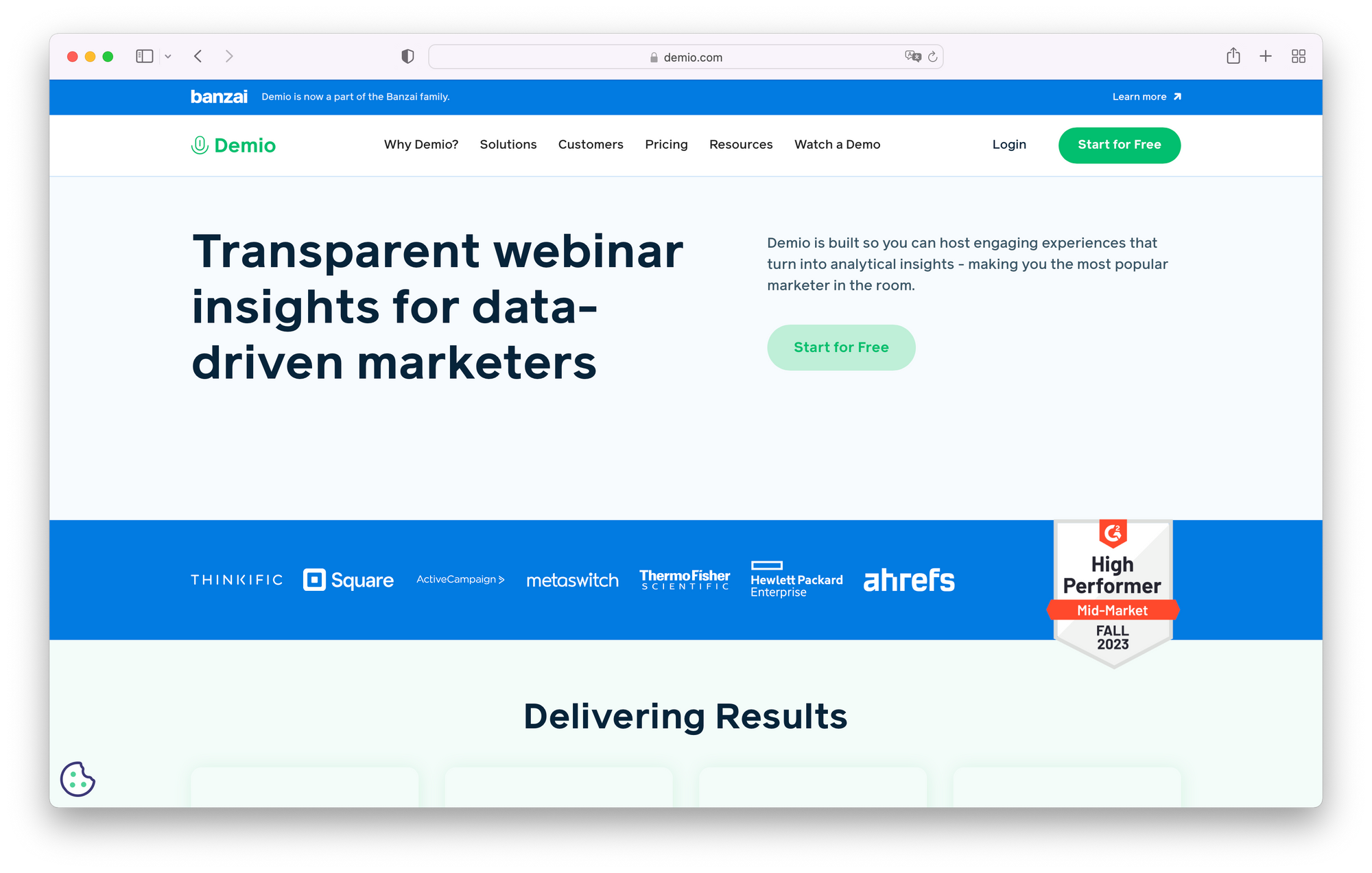
Cost
Demio's pricing can be relatively complex to understand. They offer 4 different plans, with variations depending on how many attendees you're expecting: Starter, Growth, Premium, and Unlimited
These start at:
- Starter: $59 /month for <50 live attendees (only 1 host seat)
- Growth: $109 /host/month for <150 live attendees
- Premium: $259 /host/month for <500 live attendees
- Unlimited: $399 /host/month for <1000 live attendees
If you go over these limits, or if you need CRM integrations (HubSpot, Salesforce, Pardot, etc.) you will need to upgrade to one of their yearly plans (starting at $2200 /host/month for 150 live attendees). Zapier integration is available from the Growth plan and above.
Note that this pricing is based on host seats, so when you will be looking to scale your webinar efforts pricing won't scale well.
Free plan: Demio does not offer a free plan.
Free trial: Demio offers a 14-day free trial with all the features included in their Growth plan, but is limited to 20 attendees and a 1-hour session limit. You can run an internal test with this but not a full-blown webinar.
Reviews
Capterra reviews: 4.7/5 (240 reviews)
Ease of use: 9.2/10
Support: 9.1/10
Support options: Email or live chat. Standard support for Starter & Growth plans, and priority support for Premium & Unlimited plans.
Platform availability: Online, no download, all devices (mobile and desktop).
Demio provides a webinar platform at a cheap entry price that covers the tablestakes features for running webinars.
They focus primarily on the lead generation use case, but can also be used for group demos, thought leadership, panels, roundtables, or others.
However their pricing can be deceiving. The cheapest plans don't cover Zapier or CRM integrations — requiring a lot of work from the webinar team to export and import data from Demio into the other tools of the stack.
They offer the basic webinar features (landing pages, emails, analytics) that are easy to use, good engagement features like polls, Q&A, chat, and breakout rooms. However, they are lacking in video quality and viewer experience - Demio webinars can look a little outdated.
If you're willing to pay for a Premium Demio plan you're going to get a lot of high-quality features: custom domains, premium support, dedicated account manager, as well as all the integrations mentioned previously.
Looking for an alternative? Check out our top 10 Demio alternatives.
Livestorm vs. Demio Comparison
As you can see from the overview of Livestorm and Demio, they offer very similar products. This makes it difficult for users that are trying to figure out which solution best fits their needs.
Let's compare these two tools across 5 main topics:
- Live experience (host and speaker)
- Pre- and post-webinar experience
- Viewer experience
- Integrations
- Support
1. Live experience
As a host, the tool you choose is going to have a big impact on your capacity to put on a good show for your audience.
Most webinar tools offer a webinar studio to help you run more interactive webinars. Livestorm has just that: an admin interface where you can create, edit, start polls, manage microphone and camera access, share screen, see live attendees and more.
Livestorm's admin interface is user-friendly even though it offers quite a few features to choose from. It can be easy to get lost between the viewer list, questions, polls, chat, and all the other options. But it gets the job done.
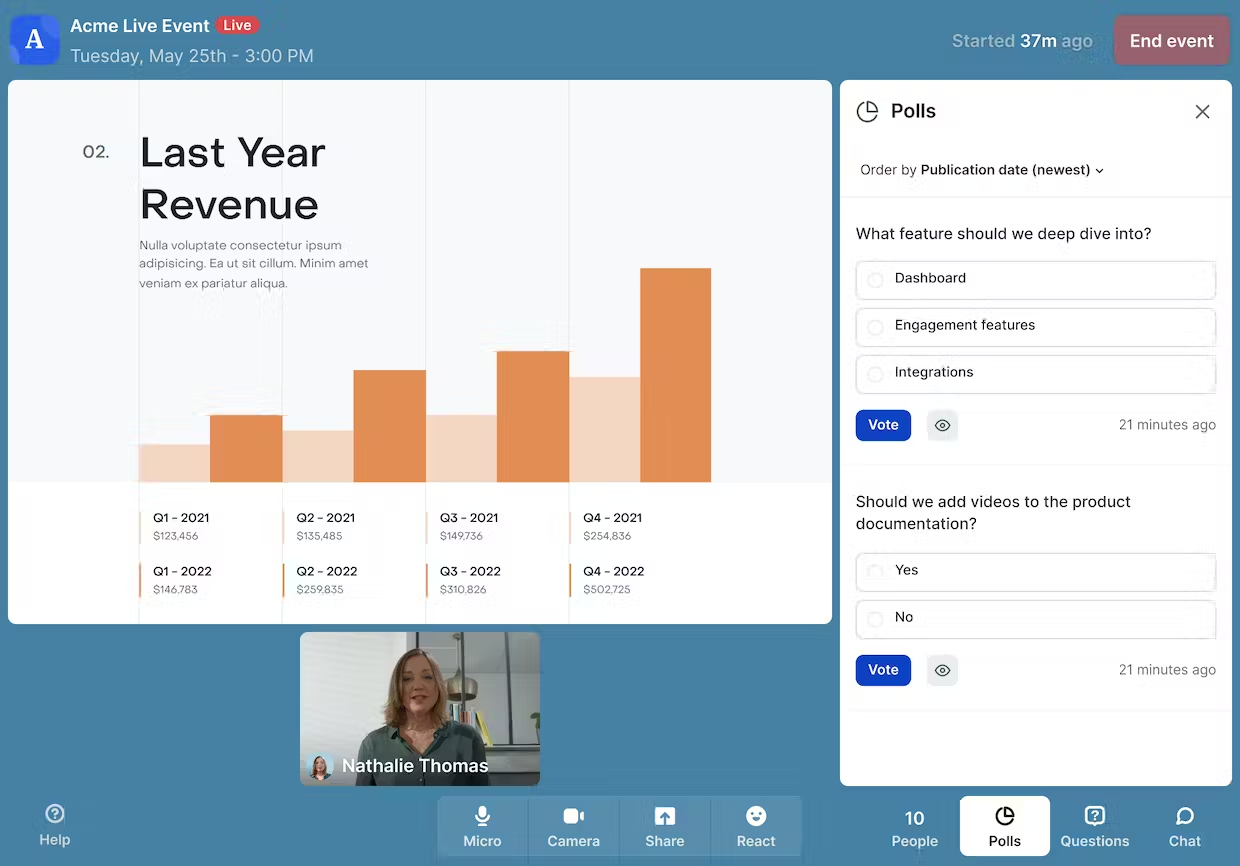
Demio has it's own version of a "webinar studio" to help you host, animate your webinars, and engage your audience. They offer all the standard features: chat, polls, uploading slides, etc. They also have some more niche features like "Handouts" that people can download from the viewer side.
However, the branding capabilities of Demio are relatively limited, without the option to select custom fonts, or add a logo for example.

This interface is not the most modern of all the webinar platforms available on the market but they do have a very simple interface that makes it relatively easy for people without a lot of experience to run webinars. Having multiple tabs and a lot of options can get overwhelming, but it's easy to get the basics done right.
Both tools offer similar speaker and moderator options to run your webinar, but Livestorm has a few more useful features (especially when it comes to branding).
Winner: Livestorm
2. Pre- and post-webinar experience
When it comes to your viewers' experience, Livestorm and Demio cover the basic features you are going to need to run webinars.
They both offer customizable and branded registration pages, automated reminder and follow-up emails, and replays (Demio and Livestorm do not record all webinars by default, so be careful if you go with them to run your events).
Livestorm and Demio have features for recurring events and simulive sessions (providing a live experience to the viewer with nobody managing the event). They also both provide more detailed viewer data.
Demio gives you a little bit more flexibility when it comes to emails and landing pages but the design is still basic and far from ideal. This is a priority for a lot of event managers, to provide an experience that feels like their brand, without needing to put a lot of extra effort into it.
Livestorm gives you more flexibility and more options when it comes to post-event automation (for example using viewer data) and integrations but we'll get into that later.
But both tools allow you to build your own landing pages with 3rd party tools and send registrants to your webinars via automation tools.
Because of the additional features and similar ease-of-use, Demio takes the win in this category.
Winner: Demio
3. Viewer experience
Livestorm offers a relatively modern viewer experience and lets you brand your webinar with profile pictures, background images, logos, social links, and more.
Polls, questions, and chat all have their own separate panels - forcing users to navigate back and forth to cover everything that's going on. This distracts users from your content, and reduces engagement on polls (because users might miss them).
Advanced users can also use the Livestorm SDK to personalize the experience even further, but this requires technical knowledge most webinar teams don't have access to.
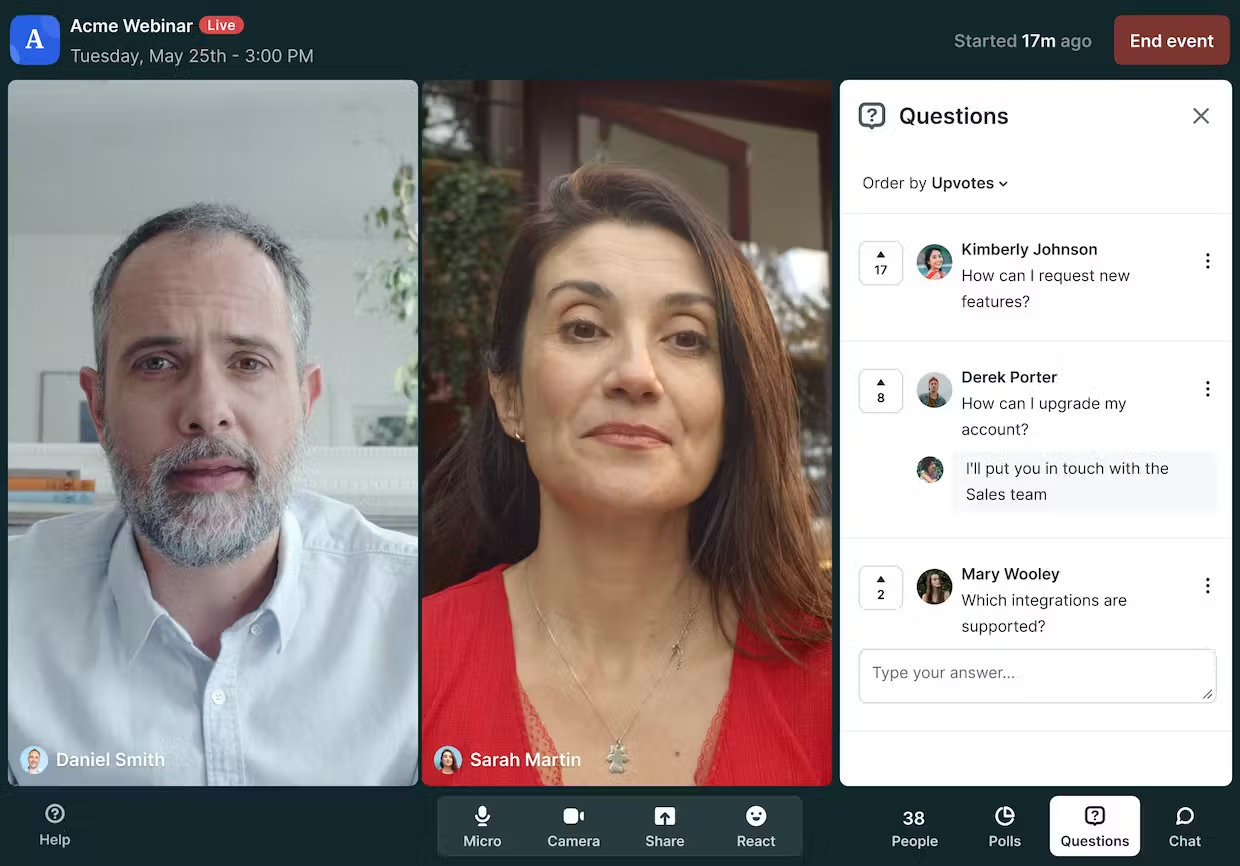
Demio's viewer experience looks a lot like its live experience for admins, moderators, and speakers. It's pretty straightforward, meaning your audience can concentrate on your webinar instead of on the interace itself. However, it's a little outdated and doesn't give your audience a premium feel for your content.

Both platforms let you stream in 720p (or 1080p for more expensive Demio), but Livestorm is going to provide a higher quality experience on all plans.
Winner: Livestorm
4. Integrations
Livestorm integrates with Google Analytics, Intercom, HubSpot, Salesforce, and many other tools of the modern marketing stack. However, some of these integrations are only available on their more expensive plans. Some users have reported that these native CRM integrations are "good enough to get the job done" but far from what they were expecting in terms of quality. Livestorm also offers an API giving tech-enabled webinar teams more flexibility when it comes to running and automating they webinar strategy.
Demio has native integrations with CRMs Hubspot, Salesforce, Marketo, and Pardot. They also offer integrations with emailing tools like Mailchimp, Drip, GetResponse, and others. However, these are only available from the Premium plan and above (starting at $2200/host/year for 150 live attendees). These integrations get average ratings across different marketplaces (2.3* on the HubSpot Marketplace).
Looking for the webinar tool with the best HubSpot integration?
Check out Contrast for free (4.9* on the HubSpot Marketplace).
Both Livestorm and Demio have Zapier integrations, allowing you to connect them to 3000+ tools. They both offer actions around the participant registering, attending a live and to register people to webinars. However, Livestorm offers both triggers and actions around organizing webinars: create event, create session, trigger when webinar is published. This makes it easier to automate the operations surrounding webinars.
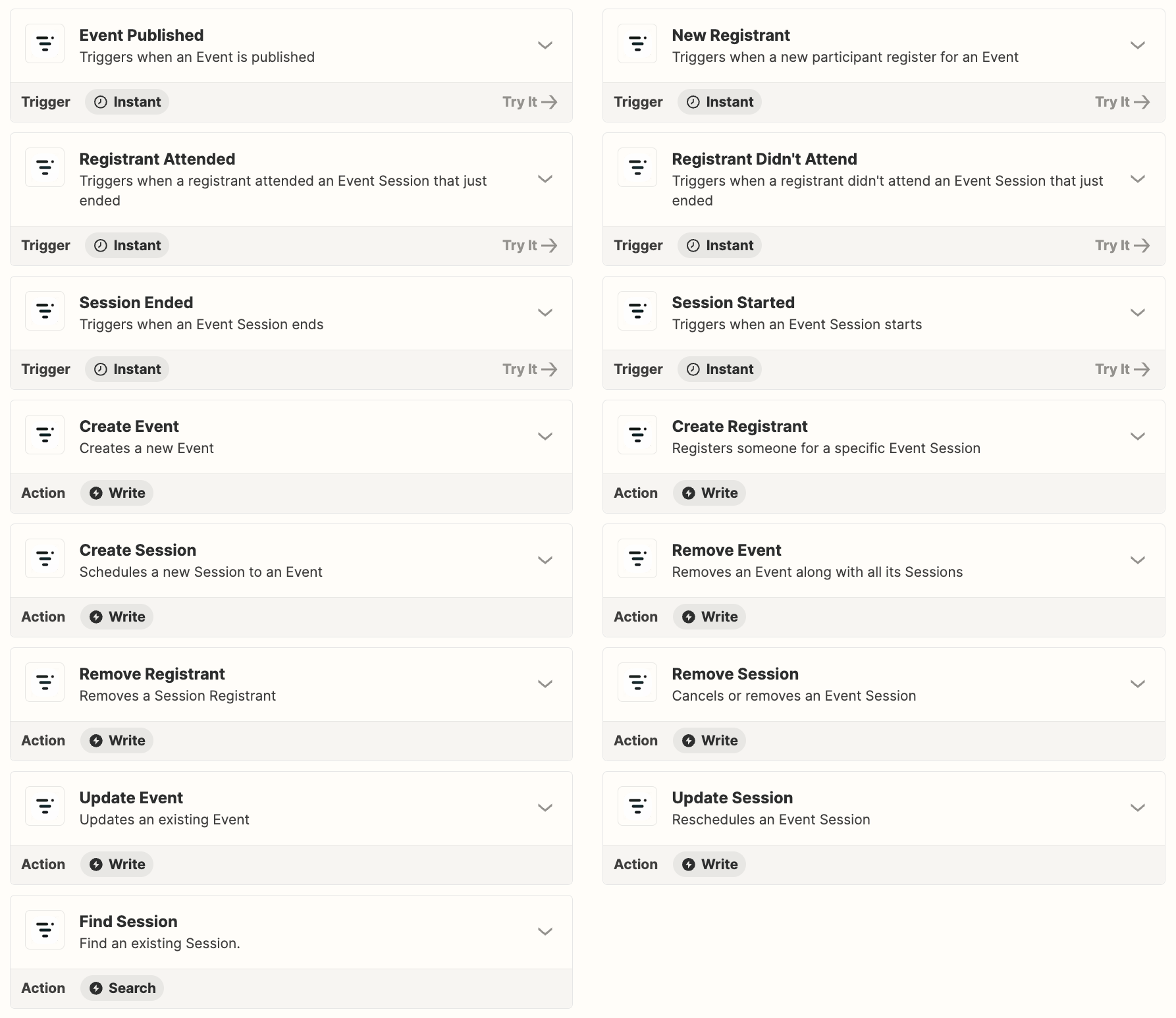
Winner: Livestorm
5. Support
Both tools offer very similar support options: email and live chat.
Livestorm has a better help center than Demio, making self-onboarding onto the tool easier and solving recurring problems or questions you might run into. They also offer additional support and "Livestorm Learning" on their Business and Enterprise plans, and shadowing by an expert for clients on their Enterprise plans (usually +$10k/year).
As mentioned above, Demio does offer priority support on their most expensive plans. However, this isn't an option for all businesses.
Users rate the quality of Demio's support higher (9.1/10) than Livestorm's — even if the options are limited.
None of the two platforms is a clear winner on average across all plans, but the numbers have spoken (and we listen).
Winner: Demio
Which is better — Livestorm or Demio?
So we just took a look at each of these platforms, but which one is going to take first place?
Both platforms are great contenders, and have very similar offerings.
For teams with a higher budget, Demio is going to provide more features around running webinars that will help you save time setting up and manging your webinar strategy. Premium support can also come in handy.
Livestorm is going to be better for teams that have a lower budget but still need the integrations and all the features around pre- and post-webinar actions. The unlimited team member policy will also help these teams scale better than they would with Demio.
Go beyond webinars
Both Livestorm and Demio are great tools for running your webinars.
However, there are many other alternatives to these two webinar tools offering a wide variety of features and pricing plans — and of course don't forget to take a look at Contrast.
Contrast is the most modern webinar tool on the market, covering all the basic features you're looking for in a tool while providing a fun, authentic and engaging experience to your audience.
We also offer tools to help you repurpose your webinar, a Netflix-like branded Channel to host all of your replays and upcoming events, all while providing the highest quality branded video experience on the market and stellar CRM integrations.

